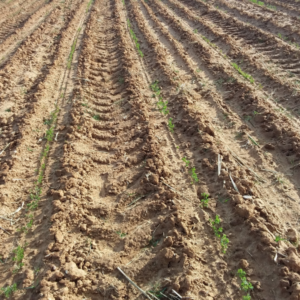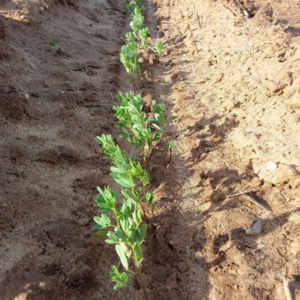Summary
The Specialty and Organic Crop Breeding program at the Texas A&M AgriLife Center in Vernon aims to develop specialty crop cultivars that are uniquely suitable to organic cropping systems in Texas and beyond. The specialty program is led by Waltram Ravelombola, Ph.D., assistant professor in the Texas A&M Department of Soil and Crop Sciences in Vernon.
His team focuses on developing cultivars with stronger yields, high nutritional values, good agronomic performance, better tolerance to abiotic stresses such as heat, drought, and salinity, and biotic stresses.
The program seeks to advance human understanding of the genetic and epigenetic mechanisms underlying important agricultural traits, to lead the development of better organic crop cultivars. The research group integrates conventional and modern tools in plant breeding, and they build specifically upon the needs of organic crop growers in Texas and beyond.
Breeding for Multipurpose Cowpea
Cowpea is a “diploid” legume species that serves as an affordable source of protein to human consumption. It is also valuable as a cover crop and as cattle forage, due to its ability to improve soil fertility by nitrogen fixation — the process by which a plant processes nitrogen in the air. In fact, a significant amount of acreage in Texas is already being used to grow cowpea.
At the same time, researchers believe that improved cultivars can greatly enhance the cowpea market through improved agronomics and nutritional value, and by introducing special cowpeas into the niche organic market.
As such, the Vernon team’s cowpea focuses include studying and breeding improved cowpea cultivars to benefit producers, retailers and consumers in five key areas:
- Developing high-yield, short-season cowpea that withstands Texas environments.
- Identifying cowpea genotypes that are adapted to organic farming systems.
- Developing cultivars with higher nutritional values.
- Developing cultivars that are ideal for forage and cover crop use.
- Dissecting cowpeas’ genetic and epigenetic mechanisms of abiotic stress such as heath, drought, salinity, and biotic stresses like bacterial blight and aphids.
Dissecting the genetics of winter hardiness and nitrogen fixation in lentils
Lentils are known as highly profitable, nutrient-dense crops with strong export potential into thriving global markets. By enhancing cultivars that can be grown in Texas, AgriLife Research scientists at Vernon believe they can increase the state’s competitiveness in national and international lentil markets.
Through genetic research, they hope to identify and breed winter hardy lentils that can adapt to Texas environments, develop short-season winter lentils, improve nitrogen fixation — the process by which a plant uses nitrogen in the air — develop cultivars for organic farming systems and dissect the genetic and epigenetic mechanism of lentils’ winter hardiness and nitrogen fixation.
The team aims to improve lentils comprehensively through five strategic approaches:
- Identifying winter hardy lentils already adapted to Texas environments.
- Developing short-season winter lentils.
- Improving nitrogen fixation in winter lentils.
- Breeding winter lentils for organic farming systems.
- Dissecting the genetic and epigenetic mechanism of winter hardiness and nitrogen fixation in winter lentils.
Developing guar varieties with enhanced nitrogen fixation
Guar in the U.S. accounts for an import value around $1.1 billion. Guar is an annual summer and multipurpose “diploid” legume commonly harvested for its guar gum, which is used in oil, food and pharmaceuticals.
Still, few guar cultivars have been released over the past 50 years, and studies have reported poor nodulation in guar — an important phase in root development that underlies strong nitrogen-fixing.
By making improvements to the cultivars, AgriLife Research scientists hope to give Texas an edge in the U.S. guar market and make long-overdue strides in developing the crop. Researchers studying guar in Vernon will focus on developing cultivars that are adapted to Texas environments, are drought and heat tolerant and do a better job of fixing atmospheric nitrogen. Researchers will also dissect the genetic mechanism of nitrogen fixation in guar.
Efforts to breed better guar pose a unique opportunity for the crop and for the expansion of Texas guar production — positioning AgriLife Research as a progressive leader in guar research.
Overall, the team aims to improve guar varieties with four key focuses:
- Developing guar cultivars adapted to Texas environments.
- Developing guar cultivars that better fix atmospheric nitrogen.
- Developing drought- and heat-tolerant guar cultivars.
- Dissecting the genetic mechanism of nitrogen fixation in guar.
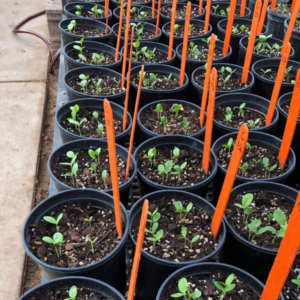
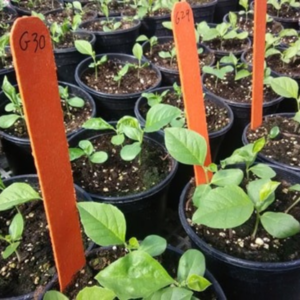
Organic barley with improved malting quality
Brewing industry growth has quadrupled over the last decade, creating significant opportunity for barley growers, but Texas producers have yet to take advantage of the demand due to a lack of varieties that can survive Texas environments and meet brewing industry standards.
That’s why AgriLife Research scientists at Vernon are working to develop organic barley cultivars that are adapted to dryland and cold temperatures, and which provide improved malting quality.
Developing barley varieties that are optimal for Texas environments, and which target niche markets, such as organic barley, should increase profitability for barley stakeholders by allowing them to take advantage of the growing demand.
Specifically, the specialty crop breeding program focuses on two key aspects of barley improvement:
- Developing organic barley cultivars adapted to dryland and cold temperatures.
- Developing barley with improved malting quality
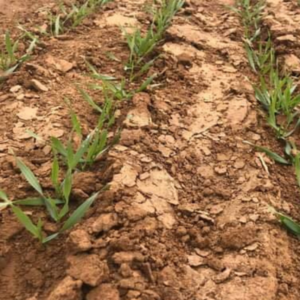
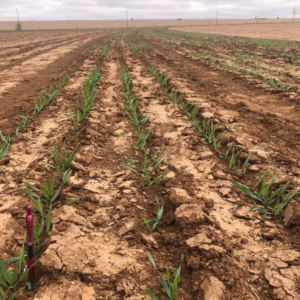
Development of a high-throughput phenotyping platform for legumes
The development and application of high-throughput phenotyping has been successful in row crop breeding. However, little has been done regarding the application of this technology in legume breeding. As such, researchers in Vernon will place heavy focus on applying Unmanned Aerial Systems (UAS) and Raman Spectroscopy to legume breeding.
The team will use these emerging technologies to estimate large samples of agronomic data including biomass, plant height and canopy coverage and flowering intensity. Scientists will also use advanced computer modeling to predict yield in legumes using UAS. They will test the feasibility of Raman Spectroscopy for abiotic stress phenotyping in legumes, and they will study the efficiency of various high throughput features to legume research.
Specific objectives of the legume phenotyping initiative include for key areas:
- Estimating agronomic data such as biomass, plant height and canopy coverage in legumes using UAV.
- Estimating flowering intensity and predicting legume yields using UAS.
- Testing the feasibility of Raman Spectroscopy for abiotic stress phenotyping in legumes.
- Testing the efficiency of various high-throughput features (sensors, platform, etc.) to legume research.
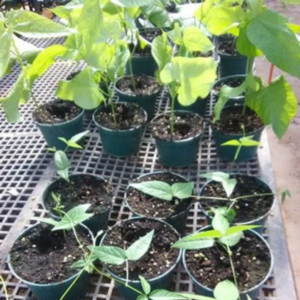
Waltram Ravelombola, Ph.D.
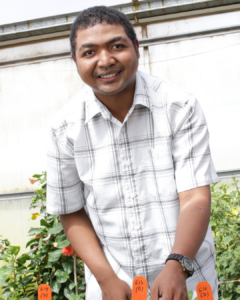
Team Members
Project Investigator
Waltram Ravelombola, Assistant Professor
Supporting Staff
Aurora Manley, Agricultural Research Technician I
Caroline Ruhl, Student Worker
Alumni
TJ Payne
Dr. Philip Hinson
Publications
2022
Zia B., A. Shi*, D. Olaoye, H. Xiong, W. Ravelombola, P. Gepts. H.F. Schwartz, M.A. Brick, K. Otto, B. ogg, and S. Chen*. 2022. Genome-wide association study and genomic prediction for bacterial wilt resistance in a common bean (Phaseolus vulgaris) core collection Frontiers in Plant Science 13. https://doi.org/10.3389/fgene.2022.853114
Ravelombola, W*, A. Shi*, B.L. Huynh, J. Qin, H. Xiong, A. Manley, L. Dong, D. Olaoye, G. Bhattarai, B. Zia, H. Alshaya, I. Alatawi. 2022. Genetic Architecture of Salt Tolerance in a Multi-Parent Advanced Generation Inter-Cross (MAGIC) Cowpea Population. BMC Genomics 23(1):1-22
2021
Ravelombola, W*, A. Manley, C. Adams, C. Trostle, S. Ale, and J. Cason. 2021. Genetic and Genomic Resources in Guar: A Review. Euphytica 217(11):1-9
Ravelombola, W., Qin, J.; Shi, A. Wang, F., Feng, Y., Meng, Y., Yang, C., and Zhang, M*. 2021. Genome-wide Association Study and Genomic Selection for Plant Height, Maturity, Seed Weight, and Yield in Soybean. Plos One 16(8): e0255761
Shrestha R., C. Adams, W. Ravelombola, J. MacMillan, C. Trostle, S. Ale, and P, Hinson. 2021. Exploring Phenotypic Variation and Associations in Root Nodulation, Morphological, and Growth Characters among 50 Guar Genotypes. Industrial Crops and Products 171: 113831
Ravelombola, W., L. Dong, T.C. Barickman, H. Xiong, D. Olaoye, G. Bhattarai, B. Zia, H. Alshaya Sr., I. Alatawi, and A. Shi*. 2021. Evaluation of Salt Tolerance in Cowpea at Seedling Stage. Euphytica 217:116 https://doi.org/10.1007/s10681-021-02832-w
Ravelombola, W.*, A. Shi*, and B. Huynh*. 2021. Loci discovery, network-guided approach, and genomic prediction for drought tolerance index in a multi-parent advanced generation inter-cross (MAGIC) cowpea population. Horticulture Research. 8:24. https://doi.org/10.1038/s41438-021-00462-w
2020
Ravelombola, W., J. Qin, A. Shi*, L. Nice, Y. Bao, A. Lorenz, J. H. Orf , N. D. Young, and S. Chen. 2020. Genome-wide association study and genomic selection for tolerance of soybean biomass reduction under to soybean cyst nematode infestation. PlosOne Published: July 16, 2020. https://doi.org/10.1371/journal.pone.0235089.
Ravelombola, W., A. Shi, S. Chen, H. Xiong, Y. Yang, Q. Cui, D. Olaoye, and B. Mou. 2020. Evaluation of cowpea for drought tolerance at seedling stage. Euphytica 216:123. https://doi.org/10.1007/s10681-020-02660-4.
Yang, Y., D. Shi, Y. Wang, L. Zhang, X. Chen, X. Yang, H. Xiong, G. Bhattarai, W. Ravelombola, D. Olaoye, G. Yang, and A. Shi. 2020. Involvement of WRKY transcription factors and glucose metabolism in the regulation of sweet potato skin color as revealed by the transcript profiling of Sushu 8 and Zhengshu 20. Plant Physiology and Biochemistry 148:1-9. https://doi.org/10.1016/j.plaphy.2019.12.035
Cui, Q., H. Xiong, Y. Yang, S. Eaton, S. Imamura, J. Santamaria, W. Ravelombola, R.E. Mason, L. Wood, L.A. Mozzoni, and A. Shi*. 2020. Evaluation of drought tolerance in Arkansas cowpea lines at seedling stage. HortScience pages 1-13, https://doi.org/10.21273/HORTSCI15036-20
Grants
- Ravelombola W. (PI). “Estimating Biological Nitrogen Fixation of the USDA Cowpea Germplasm.” USDA Germplasm Evaluation, Vigna Group, a total of $19,000; 12/2022-11/2023
- Ravelombola, W (PI). Small grain equipment grant to purchase a handheld grain moisture tester. 03/2022-01/2023, $3,000; Type: Internal Competitive Commodity Grants
- Ravelombola, W. (PI), A. Manley. Phenotypic evaluation of mungbean varieties in Texas. AgriVentis, 02/2022-04/2023, $20,094
- Ravelombola, W. (PI), B. Pinchack, and N. Gomez-Casanovas. Equipment grant to purchase DA 7250 NIR analyzer. Texas A&M AgriLife Research, 01/2022-12/2022, $56,000
- Cason, J., M. Burow, D. Kurouski, C.E. Simpson, B.F. McCutchen, J.A. Brady , and Ravelombola (co-PI), “Breeding to Increase Peanut Yields and Production Efficiency in Texas by Developing Breeding Lines with Improved Drought, Heat Tolerance and Multiple Disease Resistance”, Texas Peanut Producers Board, 07/2022-06/30/2023, a total of $185,090
- Murray, S., B.B. Singh, and Ravelombola (Co-PI). “Improved short season cowpeas and development of unmanned aerial system (UAS) and other phenotyping tools to advance pulse breeding” USDA – Agricultural Research Service Pulse Crop Health Initiative, 09/2021-02/2022, a total of $78,313
- Ravelombola, W. (PI), and A. Manley. “Developing High-throughput Phenotyping and Genomic Resources for Adaptation to Dryland Conditions in the USDA Tepary Bean Germplasm.” USDA Germplasm Evaluation, Phaseolus Group, 10/01/2021-09/30/2022, a total of $23,000
- Ravelombola W. (PI). “Evaluation of Tepary Bean for Tolerance to High Night Temperatures.” University of Nebraska-Lincoln, 05/2021-10/2021, a total of $2,000
- Ravelombola W. (PI) and R. Vierling “Genomic Architecture of the DHS 1 Gene in Cultivated Peanuts”, Texas Peanut Producers Board, 05/01/2021 – 07/31/2021, a total of $5,000
- Cason, J., M. Burow, D. Kurouski, C.E. Simpson, B.F. McCutchen, J.A. Brady , and Ravelombola (co-PI), “Breeding to Increase Peanut Yields and Production Efficiency in Texas by Developing Breeding Lines with Improved Drought, Heat Tolerance and Multiple Disease Resistance”, Texas Peanut Producers Board, 01/01/2021-06/30/2022, a total of $185,090

